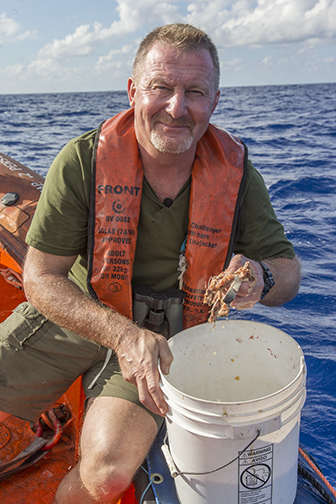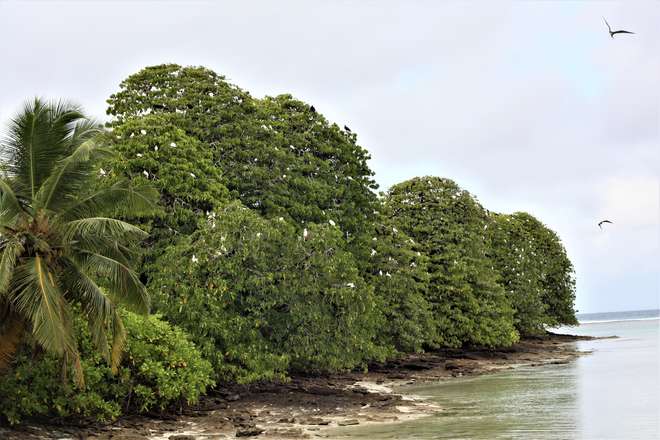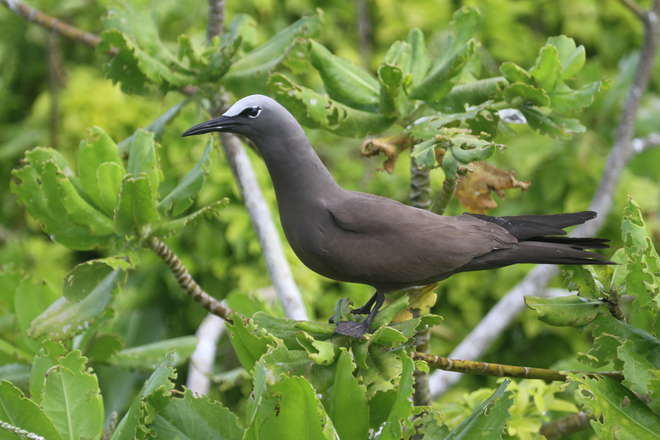Restoring Seabird Islands
By Peter Carr, ZSL

New research published this week in Restoration Ecology, led by scientists at ZSL’s Institute of Zoology, shows the potential benefits to breeding seabirds of converting coconut plantations to native habitats after invasive predators have been eradicated.
On many Pacific and Indian Ocean islands, colonisation by humans brought invasive species, the destruction of native habitats, and widespread growth of coconut plantations, leading to the decimation of seabird populations. The coconut industry on oceanic islands has since crashed, leaving the legacy of abandoned coconut plantations that, by themselves, create species-poor biomes. When an island’s flora is dominated by abandoned coconut plantations and it has invasive rats, it becomes an avian desert.
Experts from the Institute of Zoology, Zoological Society of London, along with colleagues from the Royal Botanic Gardens, Kew, the University of Exeter, and Heriot-Watt University, have been researching the possible outcomes for breeding seabirds (e.g., Red-footed Booby and Lesser Noddy) of eradicating rats from oceanic islands, with and without conversion of surrounding abandoned coconut plantations.
Working for over a decade, collecting data in the Chagos Archipelago, central Indian Ocean, scientists counted every breeding seabird on all 55 islands of the archipelago, and mapped and recorded the habitat they were breeding in. By comparing the number of seabirds breeding in a specific habitat on rat-free islands, they were able to predict the number of seabirds that could potentially colonise an island if invasive rats were eradicated, and abandoned coconut plantations were converted to native habitats. This is especially relevant in the Chagos Archipelago, as some 94% of the terrestrial landmass is rat-infested, where the vegetation is dominated by abandoned plantations.
One island, Ile du Coin in Peros Banhos atoll which, at 1.26km squared, is the fourth largest in the Chagos Archipelago, was hypothetically ecologically restored. This island has rats, and 92% of its vegetation is made up of former coconut plantation. At present, there are 51 pairs of breeding seabirds on this island, made up of three generalist species (Brown and Lesser Noddy and Common White Tern). Scientists predict that, following rat eradication, without any habitat management, the number of breeding pairs could rise to 4,306 pairs of 14 species. However if 1 km squared of abandoned plantation is converted to equal measures of native savannah and forest (example shown below), the number of breeding pairs could potentially increase to 319,762 of 16 species – more than the entire archipelago at present.

This research has practical applications throughout the Tropics. It shows that in order to restore tropical oceanic seabird islands that have been ecologically degraded, due to introduced predators and the destruction of native habitat, eradicating the predator as a single intervention method is unlikely to result in fully functional, seabird-driven ecosystems. On degraded islands where invasive rats and abandoned coconut plantations exist together, to restore seabird-driven ecosystems, rats must be eradicated, but also the plantations must be converted to native habitat.
In the Chagos Archipelago, as elsewhere in the Tropics, restoring seabird islands is no longer a ‘green dream’, it is a matter of funding and political goodwill. This research shows the requirement for an ecosystem-wide approach in order to fulfil these green dreams, and demonstrates the potential colossal gains to the family of birds that are suffering the greatest decline in number – seabirds.
You can access the paper here, and find out more about our work in the Chagos Archipelago here.


